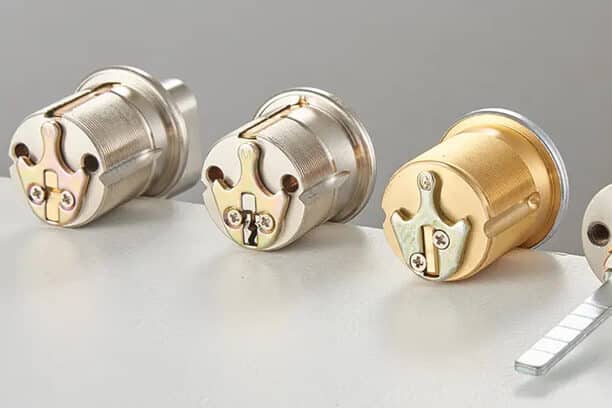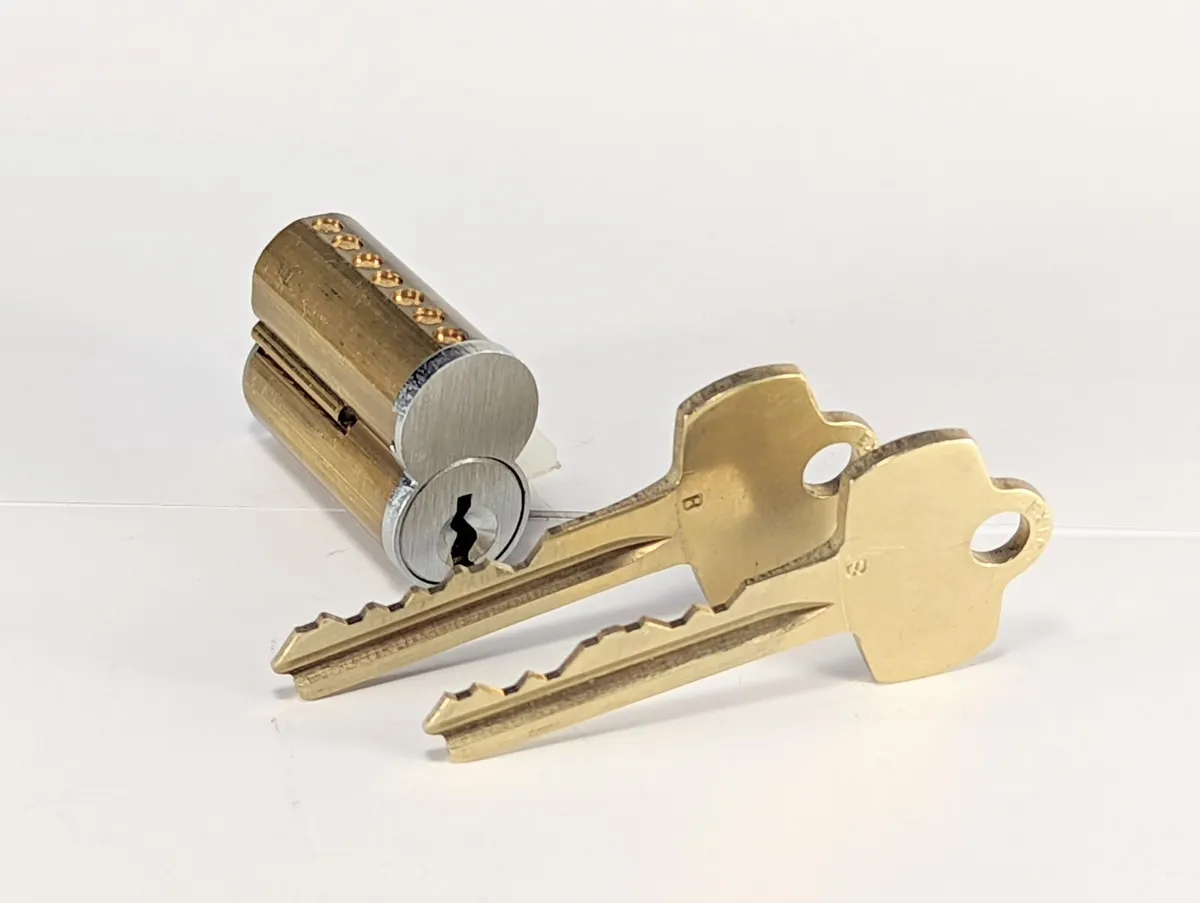A lock core is the heart of any locking system. It’s the part where you insert the key to open or secure a lock. Inside, tiny pins or wafers interact with the key’s grooves. When you turn the key, these elements align perfectly, allowing the lock to open. The lock core determines the lock’s security level and is often replaceable. If you want to change your lock without replacing the whole thing, you usually just need a new lock core. Understanding your lock core helps you make smarter choices about your home or office security.

Functions of a Lock Core
A lock core serves multiple functions, each crucial for ensuring security and ease of use. The lock core is basically the brain of any locking system. It decides whether or not a door or padlock will open, depending on the key you use. Let’s see the various functions of a lock core to understand it better.
Provides Security
The primary function of a lock core is to provide security. When you insert the correct key, the pins or wafers inside the lock core align perfectly. This lets you turn the key, open the lock, and gain access. Without the right key, the lock stays secure, protecting your belongings or property.
Allows Key Control
One great feature of lock cores is key control. Different cores allow for different keying options. You can have a master key that opens multiple locks, or individual keys for each lock. This function is handy for businesses or apartment complexes where access needs to vary from person to person.
Offers Interchangeability
Some lock cores are interchangeable. This means you can replace just the core if you need to rekey your lock. This function is cost-effective and time-saving. Instead of buying a new lock, you can just get a new core, which is usually cheaper and easier to install.
Enhances Durability
A well-made lock core enhances the overall durability of your locking system. Quality materials like brass or steel ensure the core can withstand frequent use and resist wear and tear. This makes it more economical in the long run, as you won’t have to replace the entire lock system as frequently.
Resists Tampering
High-security lock cores come with special features to resist tampering. They may have anti-pick pins or other elements that make it more difficult for unauthorized people to gain access. These features give you an added layer of security, especially useful in high-risk areas.
Facilitates Quick Access
The lock core also determines how quickly you can access a locked space. Some cores allow for quick, smooth key turns, making it easier and faster for you to get in and out. This is especially important in emergency situations where quick access could be vital.
Provides Flexibility
Finally, a lock core offers flexibility in terms of the locking systems it can fit into. Some cores are versatile, fitting into different types of locks, from padlocks to deadbolts. This gives you more options when choosing a lock system for your home or office.
Types of Lock Cores
When it comes to locking up your home or office, it’s good to know that not all lock cores are the same. There are different types to meet varying needs for security and convenience. Here are some common types you’ll come across.
Standard Core
A standard core is what you often find in residential locks. It offers basic security features and is the most affordable option. These cores work well for indoor locks, like bathroom or bedroom doors, where high security isn’t a major concern.
High-Security Core
If you need extra protection, consider a high-security lock core. These cores come with advanced features like anti-pick and anti-drill mechanisms. You’ll often find them in commercial settings or in homes that need an extra layer of security.
Removable Core
Removable cores make it easy to rekey a lock without disassembling the entire thing. If you lose a key or need to change access quickly, you can simply swap out the core. This is a popular choice for businesses with high staff turnover.
Interchangeable Core
These cores allow for quick and easy rekeying but with an added feature: master keying. This means one key can open multiple locks, while each lock still has its unique key. Interchangeable cores are popular in large buildings like schools or offices.
SFIC (Small Format Interchangeable Core)
SFIC cores are a compact version of interchangeable cores. They fit into smaller locks and are often used in furniture locks or padlocks. Despite their small size, they still offer the flexibility of master keying.
LFIC (Large Format Interchangeable Core)
These are like SFIC cores but are designed for larger, heavy-duty locks. You’ll often find these in commercial settings where high security and the ability to rekey quickly are both needed.
Tubular Core
Tubular cores are commonly found in bike locks or vending machines. They have a circular keyway and are tricky to pick, offering a moderate level of security.
Disc Detainer Core
Disc detainer cores use rotating discs instead of pins, making them hard to pick. They are often found in high-security padlocks and safe locks.

How to Replace a Lock Core?
Replacing a lock core is a task you can usually do on your own if you have the right tools and some basic know-how. Here’s a step-by-step guide to help you replace a lock core safely and effectively.
Step 1: Gather Your Tools
First, make sure you have all the necessary tools at hand. You’ll typically need a screwdriver, a new lock core, and maybe a pair of pliers. Having everything ready makes the process smoother.
Step 2: Open the Door
If you’re working on a door lock, make sure the door is open. It’s easier and safer to replace a lock core when the door is not latched shut.
Step 3: Remove the Door Handle or Knob
Use your screwdriver to take off the door handle or knob. There are usually screws on the inner side that you’ll need to unscrew. Keep these screws safe; you’ll need them later.
Step 4: Take Out the Existing Core
With the handle or knob removed, you’ll see the existing lock core. It might be held in place by a set screw or clip. Remove whatever is keeping it in place and slide the old core out.
Step 5: Insert the New Core
Take your new lock core and insert it into the hole where the old one was. Make sure it fits snugly and that the keyway is facing the right direction for your key to work.
Step 6: Secure the New Core
Once the new core is in place, secure it. This might involve tightening a set screw or replacing a clip. Follow the instructions that come with your new core for best results.
Step 7: Reattach the Door Handle or Knob
Now, you can put your door handle or knob back on. Use the screws you saved earlier to tighten it back into place.
Step 8: Test the New Lock Core
Before you consider the job done, test the new lock core several times with the new key. Make sure it locks and unlocks smoothly.
Step 9: Dispose of the Old Core Safely
Finally, don’t just throw the old core in the trash. It’s a security risk. Take it to a recycling center or destroy it to make sure it can’t be used to compromise your lock.
Step 10: Celebrate!
Congratulations! You’ve successfully replaced a lock core. Now you can enjoy the peace of mind that comes with enhanced security or the convenience of a new set of keys.
And there you have it! Replacing a lock core doesn’t have to be a daunting task if you follow these steps carefully.
